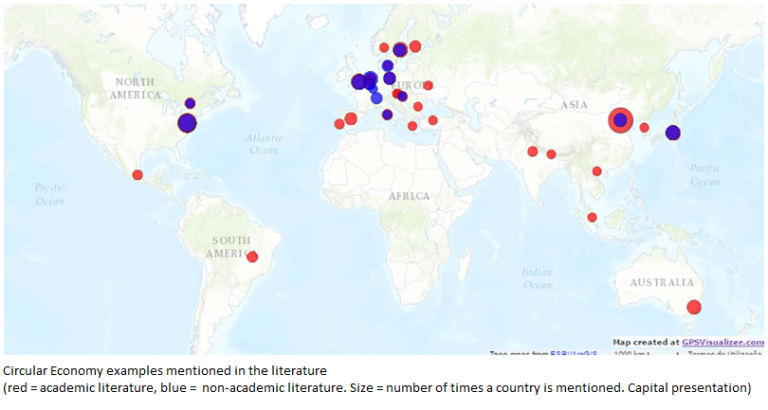Next week is the Dutch Circular Economy Week. A week where circular principles are presented and discussed to make more progress towards a full circular economy, where there is no no waste and there is a minimal negative impact on the planet’s natural resources.
A week dedicated to the Circular Economy is useful in my opinion, to see and feel the progress that is being made. Especially for a broad and complex concept as the Circular Economy, where measuring the progress is difficult. Measuring the circularity of a product or service is a challenge due to the complexity and variety of actions, activities and projects that could be called circular. Unfortunately there is still no single accepted framework that enables organizations or countries to assess and report their circularity.
The complexity and the lack of measurable progress makes the Circular Economy often a rather poorly understood concept. Not disruptive, not sexy. But more a motivational and inspirational compass towards a desired “end-state”. This makes the concept also vulnerable to its critics who emphasize the factors that are hindering the development of the Circular Economy, such as: high up-front costs, administrative burden, lack of consumer enthusiasm, minor consumer and business acceptance, lack of awareness and information, and limited sustainable public incentives. Also many virgin material prices are artificially low since energy for producing these materials is frequently provided at subsidized rates.
In the March 2018 edition of Ecological Economics, De Jesus & Mendonça present an interesting overview of the countries that are leading in the field of Circular Economy, based on academic and non-academic literature (see picture below). From this perspective the Dutch Circular Economy Week is taking place in one the leading countries.

In order to keep momentum and enthusiasm in the transition towards the Circular Economy, there is a need to the look and feel of this “transformative innovation”. It is not enough to have an inspirational compass and a vague net economic benefit of EUR 1.8 trillion until 2030 in the EU according to the Ellen MacArthur Foundation.
De Jesus & Mendonça (2018) and Kirchherr et al. (2017) see a crucial role for the government as the Circular Economy solves many of their problems: resource problems, emissions (carbon, micro-dust etc) and waste. The government can influence pricing and subsidies regarding virgin materials, emissions and waste. In an era where technological advance is at an exponential growth speed, the government can be a great enabler for innovation speed instead of hindering progress as mentioned in last week’s Strategy Blog: The sustainable innovation paradox.
Have a great and inspiring week!
Literature
De Jesus, A., & Mendonça, S. (2018). Lost in Transition? Drivers and Barriers in the Eco-innovation Road to the Circular Economy. Ecological Economics, 145, 75-89.
Kirchherr, J. W., Hekkert, M. P., Bour, R., Huijbrechtse-Truijens, A., Kostense-Smit, E., & Muller, J. (2017). Breaking the Barriers to the Circular Economy.
Photo by Herb@Victoria on Foter.com / CC BY


Measurement of the circular economy is challenging, though building blocks exist at national statistical institutes. An example (in Dutch): https://www.cbs.nl/nl-nl/achtergrond/2016/45/circulaire-economie-in-nederland
LikeLiked by 1 person
1. We need more Circular bloggers, so congrats to Norbert.
2. I feel the biggest driver comes from the top down – sustainability without compromise – which could be time, quality or cost – or a combination. You need a balance.
3. You need to remove Fear, Uncertainty and Doubt from the buyers perspective. they have their own reputation to consider, and cannot be maverick.
4. You need easy access to volumes of “different coloured capital”, as the actors involved supporting the Circular Economy take ALL the risk as acquisition of the core materials is cash intensive (think 2nd hand sales) – plus it needs huge investment in infrastructure and certainty in sales.
5. Now consider the biggest of actors – public procurement – who are hog tied to bureaucratic legislation and tenders. And right here is one of the biggest restraining factors. “We’d love to buy but we have a 4 year contract” – come back in 2022″……..yeah when the world has suffered irreparable climate change and consumed yet more rare earths and raw materials to an ever depleting reserve !!!
This is not solved in ones and twos but in the ability to have a commitment based supply chain – up and down.
Great blog and very thought provoking.
Thank you for sharing!
LikeLiked by 1 person
Great Blog!
LikeLike